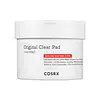What's inside
What's inside
 Key Ingredients
Key Ingredients

 Benefits
Benefits

 Concerns
Concerns

 Ingredients Side-by-side
Ingredients Side-by-side

Water
Skin ConditioningIsopropyl Myristate
EmollientMethylpropanediol
SolventPolyglyceryl-6 Caprylate
EmulsifyingPanthenol
Skin ConditioningBetaine
HumectantAllantoin
Skin ConditioningCentella Asiatica Root Extract
Skin ConditioningPinus Pinaster Bark Extract
AntioxidantEthylhexylglycerin
Skin ConditioningCetylpyridinium Chloride
AntimicrobialCaprylyl Glycol
EmollientCocamidopropyl Pg-Dimonium Chloride Phosphate
Citric Acid
BufferingSodium Citrate
BufferingRosmarinus Officinalis Leaf Oil
MaskingCentella Asiatica Leaf Extract
Skin ConditioningHydrogenated Phosphatidylcholine
EmulsifyingCaprylic/Capric Triglyceride
MaskingSucrose Stearate
EmollientAsiaticoside
AntioxidantMadecassic Acid
Skin ConditioningAsiatic Acid
Skin ConditioningCentella Asiatica Extract
CleansingCholesterol
EmollientMadecassoside
AntioxidantWater, Isopropyl Myristate, Methylpropanediol, Polyglyceryl-6 Caprylate, Panthenol, Betaine, Allantoin, Centella Asiatica Root Extract, Pinus Pinaster Bark Extract, Ethylhexylglycerin, Cetylpyridinium Chloride, Caprylyl Glycol, Cocamidopropyl Pg-Dimonium Chloride Phosphate, Citric Acid, Sodium Citrate, Rosmarinus Officinalis Leaf Oil, Centella Asiatica Leaf Extract, Hydrogenated Phosphatidylcholine, Caprylic/Capric Triglyceride, Sucrose Stearate, Asiaticoside, Madecassic Acid, Asiatic Acid, Centella Asiatica Extract, Cholesterol, Madecassoside
 Reviews
Reviews

Ingredients Explained
These ingredients are found in both products.
Ingredients higher up in an ingredient list are typically present in a larger amount.
Allantoin is a soothing ingredient known for its protective and moisturizingg properties. Because of this, it is often added to products with strong active ingredients.
Studies show higher concentrations of this ingredient can promote wound healing.
Though it can be derived from the comfrey plant, allantoin is produced synthetically for cosmetic products to ensure purity.
Learn more about AllantoinPanthenol is a common ingredient that helps hydrate and soothe the skin. It is found naturally in our skin and hair.
There are two forms of panthenol: D and L.
D-panthenol is also known as dexpanthenol. Most cosmetics use dexpanthenol or a mixture of D and L-panthenol.
Panthenol is famous due to its ability to go deeper into the skin's layers. Using this ingredient has numerous pros (and no cons):
Like hyaluronic acid, panthenol is a humectant. Humectants are able to bind and hold large amounts of water to keep skin hydrated.
This ingredient works well for wound healing. It works by increasing tissue in the wound and helps close open wounds.
Once oxidized, panthenol converts to pantothenic acid. Panthothenic acid is found in all living cells.
This ingredient is also referred to as pro-vitamin B5.
Learn more about Panthenol